Expert tips
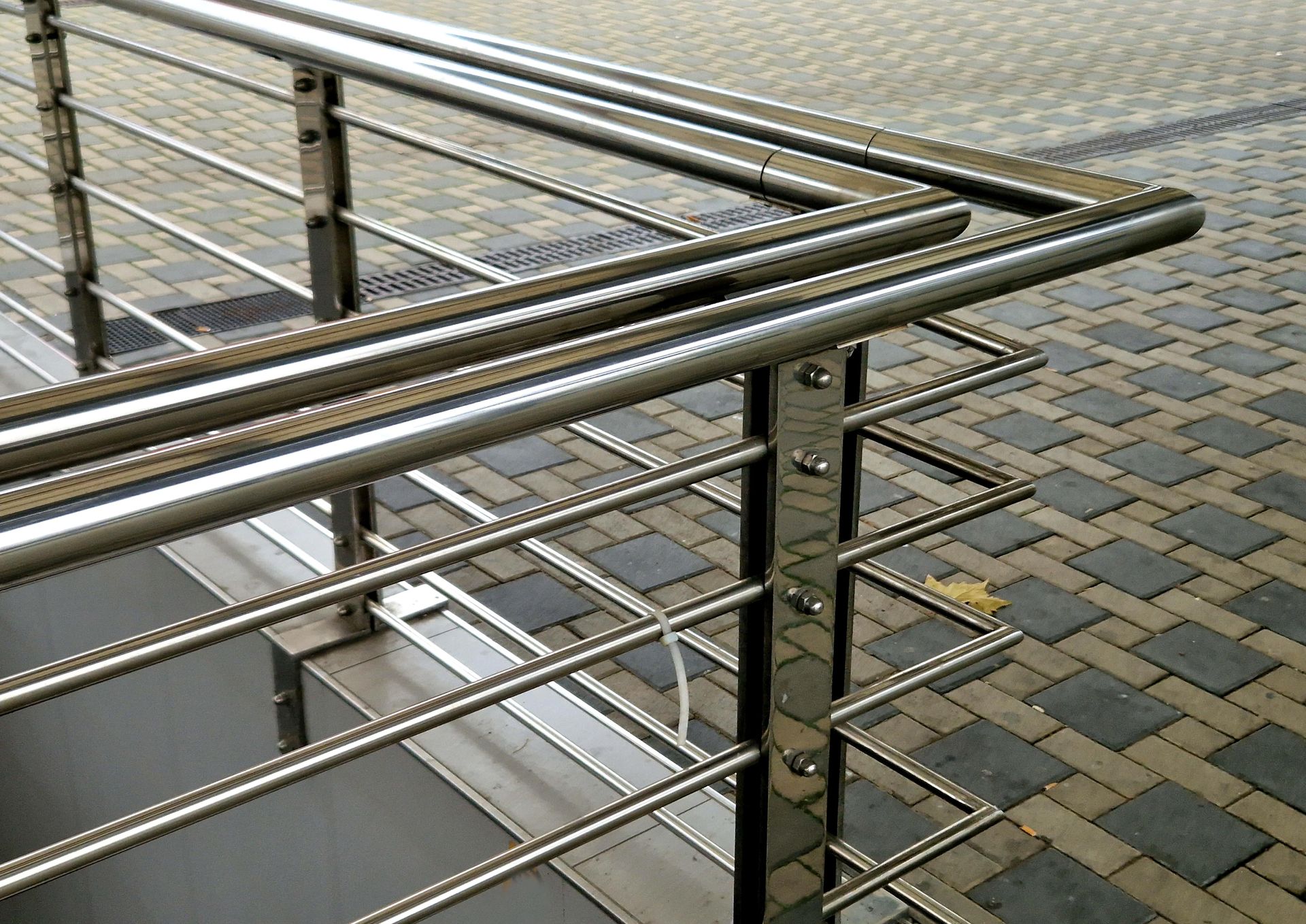
Handrails are a fundamental feature in both residential and commercial spaces, serving as a critical element for safety and accessibility. While they are often seen as a simple support structure, handrails play a much larger role in ensuring that buildings are accessible to everyone, including individuals with disabilities, the elderly, and those with mobility challenges. At Atlanta Railing Pros, we understand the importance of handrails not just for their aesthetic appeal but also for their essential function in meeting accessibility and safety compliance standards. The Role of Handrails in Accessibility Accessibility is a key consideration in modern building design. As more people recognize the need for inclusive environments, handrails have become an important part of making spaces accessible to all. Handrails provide necessary support for individuals who may have difficulty walking or maintaining balance, such as the elderly, people with disabilities, or those recovering from injuries. For these individuals, handrails are more than just a convenience—they are a necessity. They provide a secure grip that helps prevent falls and accidents, especially on stairs, ramps, and other elevated surfaces. By offering stability and support, handrails enable individuals to navigate spaces more independently, enhancing their mobility and confidence. Compliance with Safety Regulations In addition to their role in accessibility, handrails are also essential for meeting safety compliance regulations. Building codes and standards, such as those set by the Americans with Disabilities Act (ADA), require the installation of handrails in certain areas to ensure the safety of all building occupants. These regulations specify various aspects of handrail design, including height, diameter, clearance, and load-bearing capacity. For example, the ADA requires that handrails be placed at a height of 34 to 38 inches from the surface of the stairs or ramp, ensuring that they are within easy reach for most individuals. The diameter of the handrail must be between 1.25 and 2 inches to allow for a secure grip, and there must be a clear space of at least 1.5 inches between the handrail and the wall to prevent fingers from getting trapped. Handrails must also be able to support a certain amount of weight without bending or breaking, which is crucial for ensuring the safety of those who rely on them. By adhering to these standards, builders and property owners can help prevent accidents and ensure that their spaces are safe for everyone. Handrails in Commercial Spaces In commercial spaces, the importance of handrails is even more pronounced. Public buildings, such as offices, schools, hospitals, and shopping centers, must be accessible to a wide range of individuals, including those with disabilities. Installing handrails that meet accessibility and safety standards is not just a legal requirement but also a moral responsibility for business owners and property managers. Handrails in commercial spaces must be durable and able to withstand heavy use. Materials such as stainless steel, aluminum, and wrought iron are often preferred for their strength and longevity. Additionally, handrails in public spaces may need to be designed with additional features, such as tactile indicators or contrasting colors, to assist individuals with visual impairments. Enhancing Safety in Residential Settings While commercial spaces have strict guidelines for handrails, residential settings should also prioritize safety and accessibility. Homes with multiple levels, outdoor decks, or long hallways can benefit from the installation of handrails to assist residents and visitors. For families with elderly members or individuals with disabilities, having properly installed handrails is crucial for preventing falls and ensuring safe navigation throughout the home. At Atlanta Railing Pros, we offer customized handrail solutions that blend seamlessly with your home’s design while providing the necessary support for safety and accessibility. We work with you to design handrails that not only meet compliance standards but also enhance the overall aesthetic of your home. Conclusion Handrails are a vital component of any building’s design, playing a critical role in ensuring accessibility and safety compliance. Whether in a commercial or residential setting, handrails provide essential support that allows individuals to move safely and confidently through spaces. At Atlanta Railing Pros, we are committed to creating handrail solutions that meet the highest standards of safety and accessibility, while also enhancing the beauty and functionality of your property. By prioritizing the installation of high-quality handrails, you can create an inclusive environment that is both safe and welcoming for everyone.
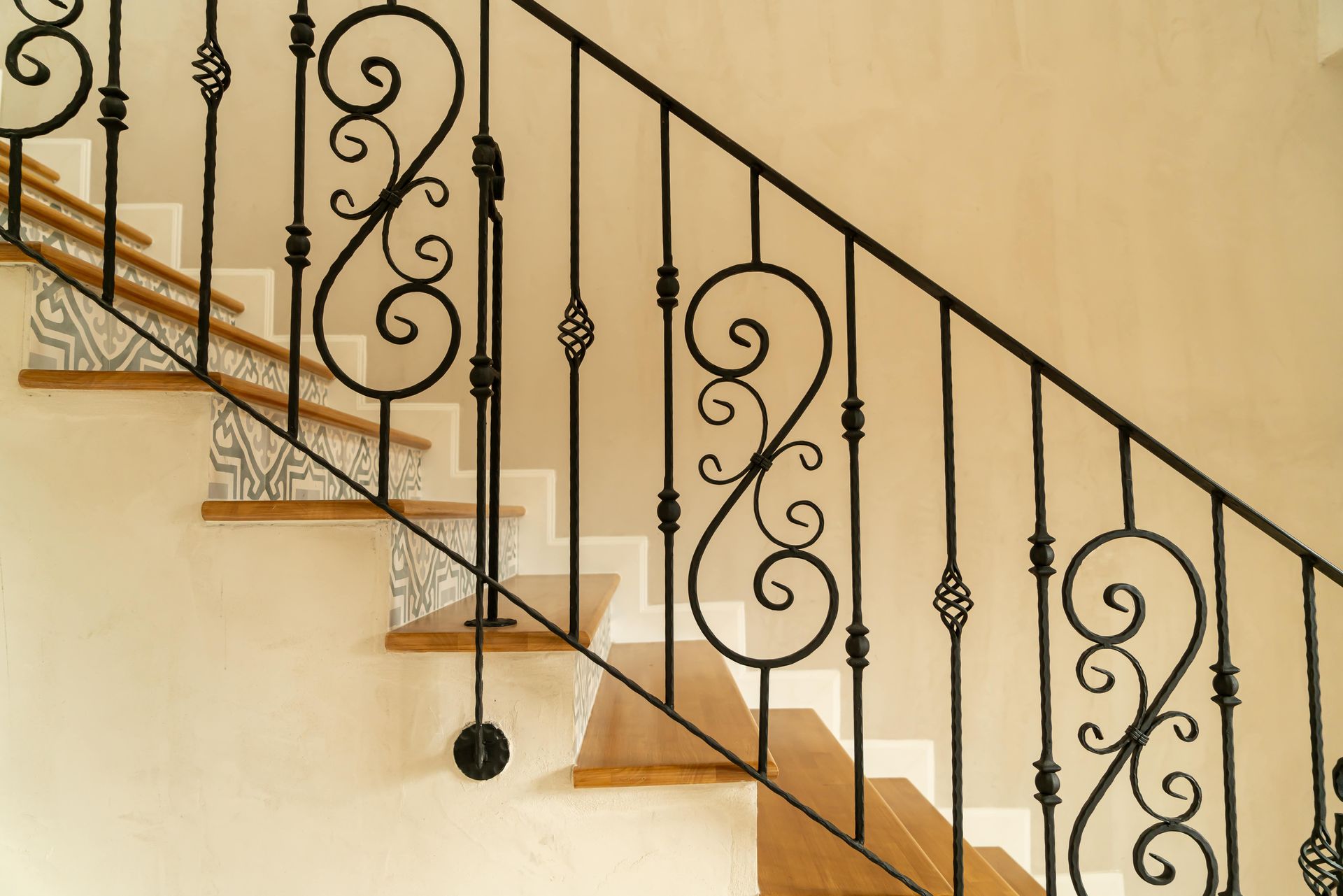
The staircase is often one of the most prominent features in a home, serving as a functional pathway between floors and as a visual focal point. One of the easiest and most effective ways to elevate the look of your staircase is by updating or installing elegant handrail solutions. At Atlanta Railing Pros, we believe that the right handrail can transform an ordinary staircase into a stunning architectural statement, combining safety, style, and sophistication. The Role of Handrails in Staircase Design Handrails play a dual role in staircase design. Functionally, they provide the necessary support and safety for anyone using the stairs, ensuring a firm grip and reducing the risk of falls. Aesthetically, they offer an opportunity to enhance the overall look and feel of your staircase, complementing your home's interior design and adding a touch of elegance. Whether your home is modern, traditional, or somewhere in between, the right handrail can tie together the design elements of your staircase, making it a cohesive and attractive feature in your home. Choosing the Right Material for Elegance One of the key factors in creating an elegant handrail solution is selecting the right material. The material you choose will set the tone for the entire staircase and influence its overall aesthetic. Wood: Wooden handrails are a timeless choice that exudes warmth and elegance. They can be crafted in various styles, from the classic look of dark-stained mahogany to the light and airy feel of oak or maple. Wood can be carved and shaped to create intricate designs, making it ideal for traditional or classic interiors. For a modern twist, consider a sleek, minimalist wooden handrail with clean lines and a smooth finish. Metal: Metal handrails, such as wrought iron or stainless steel, offer a sophisticated and durable option. Wrought iron is known for its ability to be molded into intricate, ornamental designs, making it a favorite for homeowners looking to add a touch of old-world charm to their staircase. Stainless steel, on the other hand, provides a more contemporary look with its polished finish and minimalist appeal. Metal handrails can also be combined with other materials, such as glass or wood, for a unique and custom look. Glass: For a truly modern and elegant staircase, consider incorporating glass into your handrail design. Glass handrails create a sense of openness and light, allowing the staircase to blend seamlessly with the surrounding space. They are particularly effective in contemporary homes, where they can enhance the minimalist aesthetic. Paired with metal or wood, glass handrails offer a perfect balance between transparency and structure. Cable: Cable handrails are an excellent choice for those seeking a sleek and unobtrusive design. Made from stainless steel cables tensioned between posts, cable handrails are ideal for modern, minimalist homes. They provide safety without blocking views, making them perfect for open-concept spaces or staircases with large windows or scenic views. Customization: Adding Personal Touches To truly transform your staircase, consider customizing your handrails to reflect your personal style and the character of your home. Customization options include the shape of the handrail, the style of the balusters, and the finish. Shape: Handrails come in various shapes, from round to square to more elaborate profiles. A rounded handrail offers a classic and comfortable grip, while a square or rectangular design provides a more contemporary feel. Balusters: The vertical posts that support the handrail, known as balusters, are another area where you can inject personality into your staircase design. Choose from a range of styles, from simple and streamlined to ornate and decorative, depending on the look you want to achieve. Finish: The finish of your handrail can dramatically change its appearance. A polished metal finish exudes modern sophistication, while a matte or brushed finish offers a more understated elegance. For wood, consider staining it to highlight the natural grain, or painting it to match or contrast with the surrounding décor. The Impact of Elegant Handrails on Your Home Updating your handrails with elegant solutions can have a significant impact on the overall aesthetic of your home. A well-designed handrail not only enhances the beauty of your staircase but also adds value to your home by improving its architectural appeal. At Atlanta Railing Pros, we specialize in creating custom handrail solutions that elevate the look of any staircase. Our expert craftsmen work with you to design and install handrails that perfectly complement your home’s style while providing the safety and functionality you need. Conclusion Transforming your staircase with elegant handrail solutions is an investment in both safety and style. By carefully selecting materials, designs, and finishes, you can create a staircase that is not only functional but also a stunning centerpiece in your home. At Atlanta Railing Pros, we are dedicated to helping you achieve this transformation, ensuring that your staircase is both beautiful and practical, enhancing the overall ambiance of your living space.
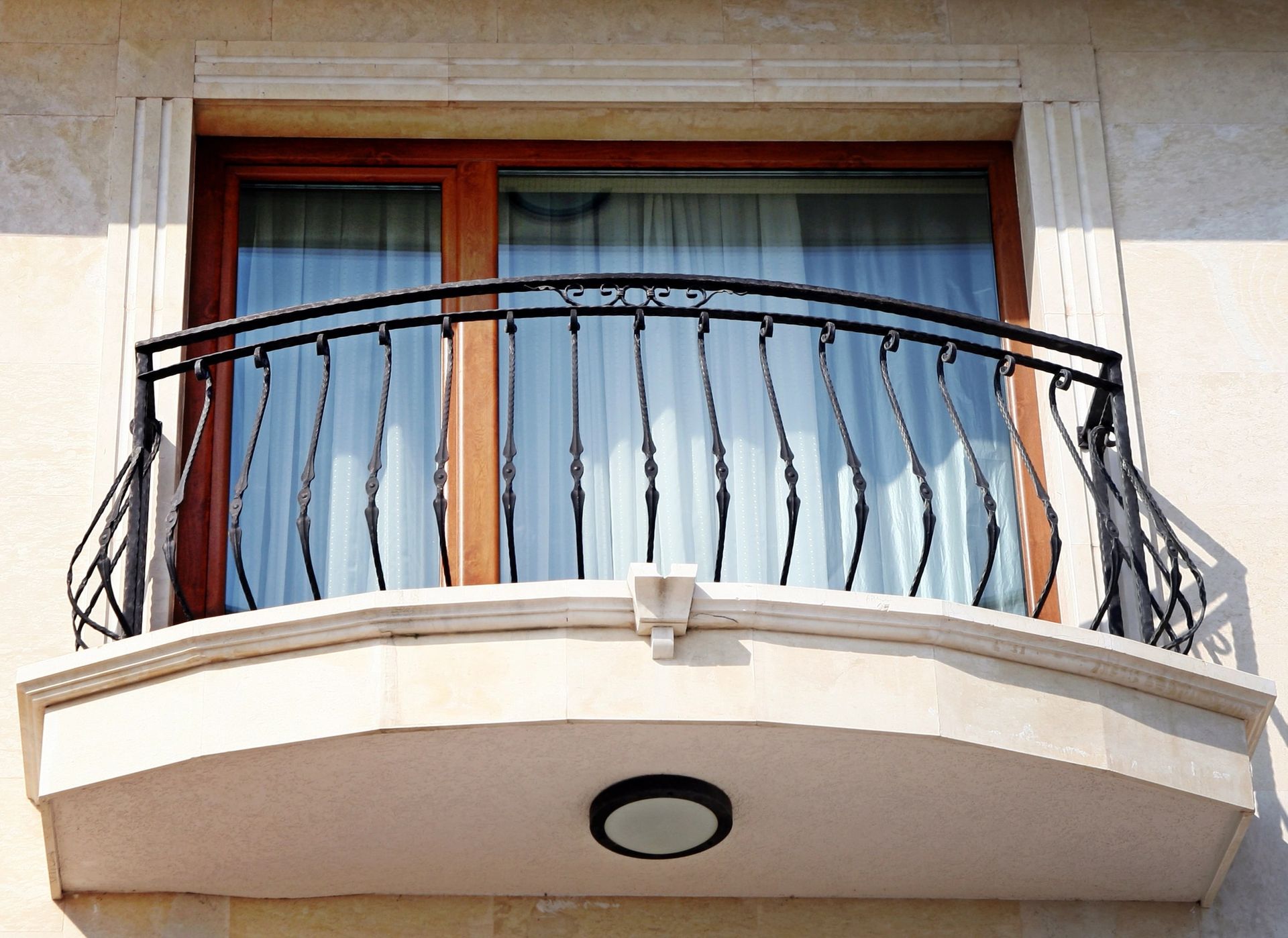
When it comes to choosing the right handrail for your home, the material you select plays a crucial role in both the function and aesthetic appeal of the space. At Atlanta Railing Pros, we understand that handrails are more than just a safety feature; they are an integral part of your home’s design. Whether you’re looking for something modern and sleek or traditional and timeless, selecting the right material is key to achieving your desired look and feel. Wood: Timeless and Versatile Wood is one of the most popular choices for handrails, and for good reason. Its natural beauty, warmth, and versatility make it an excellent option for both indoor and outdoor applications. Wooden handrails can be crafted in various styles, from simple and rustic to intricate and ornate. They can be stained or painted in a wide range of colors, allowing for easy customization to match your home’s décor. The type of wood you choose can also impact the durability and appearance of the handrail. Hardwoods like oak, maple, and cherry are highly durable and resistant to wear, making them ideal for high-traffic areas. Softer woods like pine are more affordable and easier to work with, but they may require more maintenance over time. Metal: Durable and Modern Metal handrails are known for their durability and strength, making them an excellent choice for areas that require extra support, such as staircases and balconies. Metals like wrought iron, stainless steel, and aluminum offer a sleek, modern aesthetic that complements contemporary and industrial design styles. Wrought iron handrails are particularly popular for their classic elegance and intricate detailing. They are often used in traditional and ornate designs, adding a touch of sophistication to any space. Stainless steel, on the other hand, is prized for its clean lines and resistance to corrosion, making it a low-maintenance option for both indoor and outdoor use. Aluminum is lightweight and versatile, offering a more budget-friendly alternative without sacrificing style or durability. Glass: Sleek and Contemporary For a modern, open, and airy feel, glass handrails are an excellent choice. They offer an unobstructed view, making them ideal for showcasing a beautiful staircase or a scenic outdoor space. Glass handrails are typically framed with metal or wood, combining the transparency of glass with the strength and stability of other materials. Tempered glass is used for safety, ensuring that the handrail is strong and resistant to impact. Frosted or tinted glass options are also available for added privacy or to create a unique design statement. Glass handrails are perfect for modern homes that prioritize clean lines and minimalist aesthetics. Cable: Minimalist and Unobtrusive Cable handrails are a popular choice for those seeking a minimalist, unobtrusive design. They consist of stainless steel cables that are tensioned between posts, creating a sleek and open look. Cable handrails are often used in outdoor settings, such as decks and balconies, where they allow for unobstructed views while providing the necessary safety. The durability of stainless steel cables makes them an ideal choice for outdoor environments, as they are resistant to weathering and corrosion. Cable handrails are also relatively low maintenance, requiring only occasional cleaning to keep them looking their best. Choosing the Right Material for Your Home Selecting the right material for your handrails depends on several factors, including your home’s design style, the location of the handrails, and your budget. Wood offers timeless beauty and versatility, metal provides durability and a modern aesthetic, glass delivers a sleek and open feel, and cable offers a minimalist, unobtrusive option. At Atlanta Railing Pros, we work closely with our clients to help them choose the best handrail material for their specific needs. Our team of experts will guide you through the selection process, ensuring that your handrails not only meet safety standards but also enhance the overall look and feel of your home. Investing in high-quality handrails is an essential part of creating a safe and stylish home. By choosing the right material, you can ensure that your handrails are both functional and beautiful, adding value and appeal to your living space.
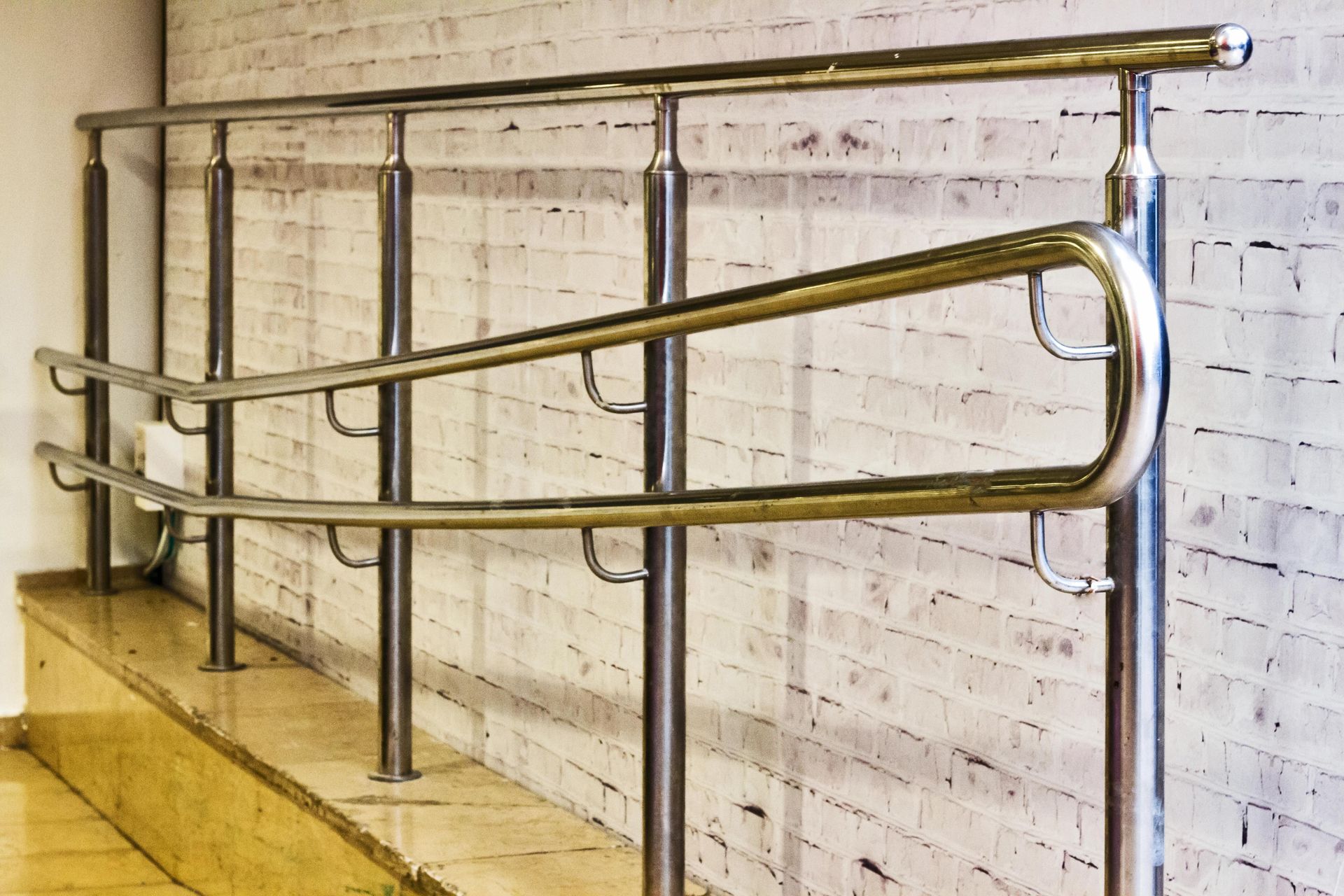
As a leading provider of custom handrail solutions in the Atlanta metro area, the team at Atlanta Railing Pros understands the importance of ensuring our installations comply with the city's strict building code requirements. Proper adherence to local safety regulations is essential for protecting the wellbeing of residents and visitors alike. In this post, we'll dive into the key Atlanta building code standards for handrail height, gripping surfaces, strength, continuity, and more. By understanding these guidelines, homeowners, business owners, and property managers can work with our team to design and install a handrail system that not only enhances the aesthetics and accessibility of their property, but also meets the safety benchmarks set forth by the City of Atlanta. Handrail Height According to the Atlanta building code, handrails must be installed between 34 and 38 inches above the surface of the stair treads or ramp. This height range is intended to provide comfortable and accessible gripping for users of all ages and statures. Our team carefully measures each project site to guarantee the final handrail placement falls within this specified zone. Handrail Gripping Surface The Atlanta building code has detailed requirements when it comes to the gripping surface of a handrail. The surface must be continuous, without interruption by newel posts or other obstructions. It must also feature a circular cross-section with an outside diameter between 1.25 and 2 inches - the ideal range for a secure, comfortable grip. Furthermore, there must be at least 1.5 inches of clearance between the handrail and any adjacent wall or surface. Handrail Strength Safety is paramount for any handrail installation, which is why the Atlanta building code has stringent strength requirements. Handrails must be able to withstand a concentrated load of 200 pounds applied in any direction at any point along the top of the rail. They must also be able to support a distributed load of 50 pounds per linear foot, also applied in any direction. Our team utilizes heavy-duty mounting hardware and specialized installation techniques to ensure every handrail meets or exceeds these strength standards. Handrail Continuity Continuous, uninterrupted handrails are essential for safe navigation, especially on stairs and ramps. The Atlanta code requires that handrails run the full length of the stairs or ramp, from the top riser to the bottom riser. They must also return to the wall, guard, or floor at each end, or terminate in a newel post. This seamless design helps users maintain a secure grip and consistent support as they ascend or descend. Additional Requirements Beyond the core elements above, the Atlanta building code has some additional handrail guidelines that our team closely follows: Handrails are required on at least one side of enclosed stairways with 4 or more risers. Ramps with a slope greater than 1:20 must have handrails on both sides. Handrails cannot project more than 4.5 inches into the required width of a stairway. Adhering to these detailed code requirements is essential for ensuring the safety and longevity of any handrail installation. At Atlanta Railing Pros, we make it a priority to stay up-to-date on the latest local regulations and work closely with building inspectors to guarantee full compliance. When you partner with our team, you can have complete confidence that your new handrail system will not only elevate the look and accessibility of your property, but also meet the strict safety standards put in place by the City of Atlanta. Contact us today to learn more about our custom handrail solutions and how we can help you navigate the building code requirements.
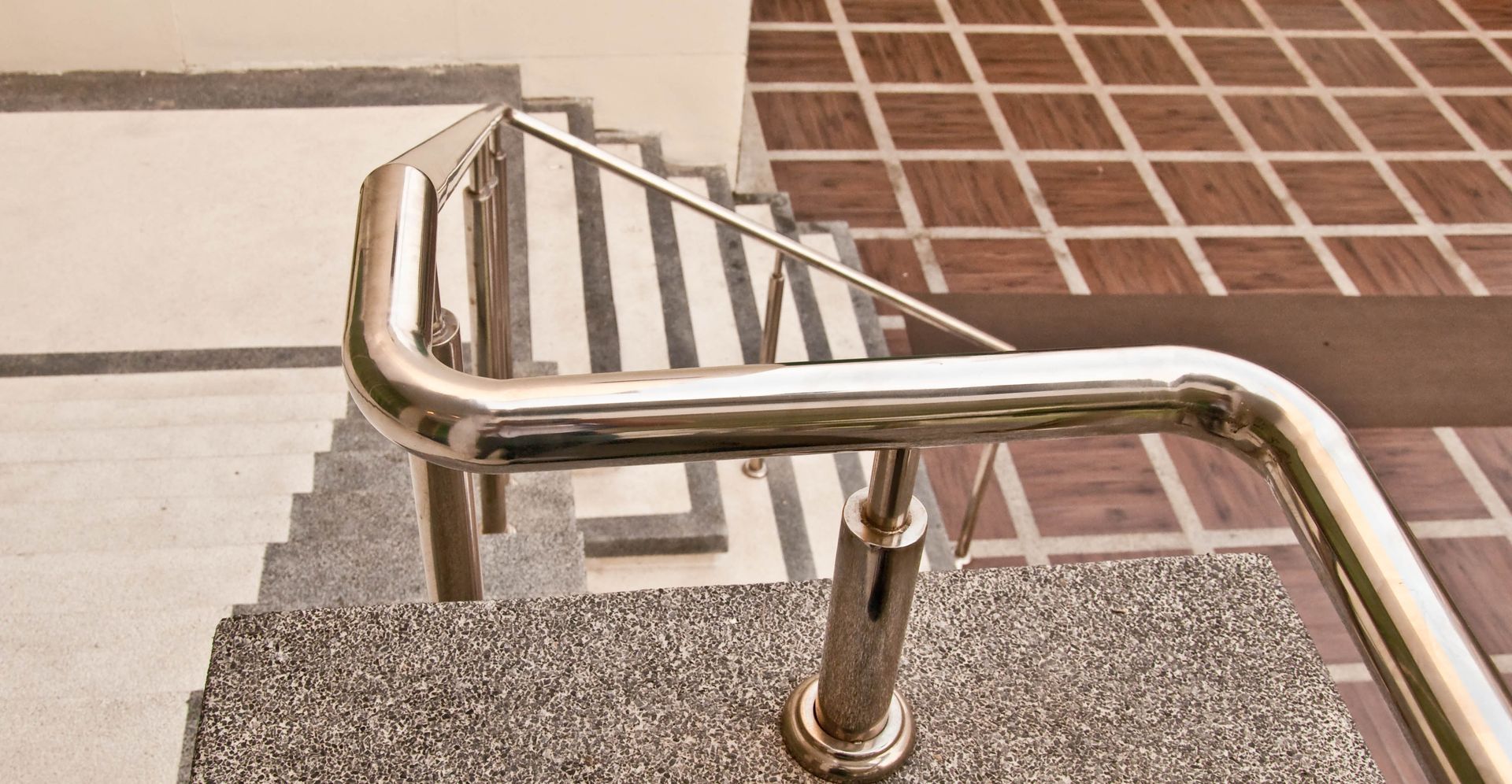
Handrails are often viewed purely as safety features, but they also offer significant potential as design elements that enhance the overall aesthetic of your home. At Atlanta Railing Pros, we believe that handrails are an art form, combining functionality with visual appeal. Whether you're designing a staircase, balcony, or deck, the right handrail can transform your space, adding character, style, and elegance. Functionality: The Foundation of Handrail Design The primary function of a handrail is to provide safety and support. Handrails offer stability on staircases and elevated platforms, ensuring that residents and visitors can navigate these areas without risk. For older adults, children, or those with mobility challenges, handrails are especially critical in preventing falls and accidents. However, functionality doesn't have to be at odds with style. A well-designed handrail can meet all safety standards while also serving as a beautiful architectural feature. When considering the function of your handrail, factors such as height, grip, and durability are essential. The handrail must be sturdy and comfortable to hold, offering a secure grip that guides users up or down stairs or along walkways. Aesthetic Appeal: Elevating Your Space While functionality is vital, the aesthetic appeal of your handrail should not be overlooked. Handrails can serve as a striking focal point in your home's design, whether they’re part of a grand staircase or an outdoor deck. The key is to choose a design that complements your home's architectural style and personal taste. Material Selection: A Crucial Design Choice The material you choose for your handrails has a significant impact on both their function and aesthetic appeal. Wood, metal, glass, and cable are popular options, each offering unique qualities that can enhance different design styles. Wood: Wood is a classic choice that brings warmth and natural beauty to any space. It’s versatile and can be crafted in various styles, from rustic to modern. A wooden handrail can be stained or painted to match your interior, making it an excellent choice for traditional and contemporary homes alike. Metal: Metal handrails, such as those made from wrought iron or stainless steel, offer durability and a sleek, modern look. Wrought iron is known for its intricate designs and traditional elegance, making it ideal for ornate, classic settings. Stainless steel, on the other hand, is perfect for minimalist and industrial designs due to its clean lines and resistance to corrosion. Glass: Glass handrails create a sense of openness and light. They are perfect for modern homes that prioritize airy, uncluttered spaces. Glass handrails are often paired with metal or wood frames, allowing for a combination of transparency and structural integrity. Cable: Cable handrails are ideal for contemporary designs, offering a minimalist and unobtrusive look. They are particularly popular in outdoor settings, where they provide safety without obstructing views. Design Features: Personalizing Your Handrails Once you’ve selected the material, consider the design features that will make your handrails stand out. Customization options include the shape of the handrail, the style of the posts and balusters, and the finish. Rounded handrails offer a comfortable grip and a softer look, while square or rectangular designs create a more modern, angular appearance. Balusters, the vertical posts that support the handrail, also provide an opportunity for creativity. They can be simple and understated, or intricate and decorative, depending on the desired aesthetic. The finish of your handrail, whether it’s a polished metal, stained wood, or painted surface, will also contribute to the overall look and feel of the space. Integrating Handrails into Your Home’s Design The art of handrail design lies in integrating these elements into the broader context of your home’s architecture and interior design. A well-designed handrail should complement the style of your home, whether it’s traditional, modern, or somewhere in between. For example, a wrought iron handrail with ornate details might be the perfect fit for a grand, classic staircase, while a sleek glass and metal combination could be ideal for a contemporary, open-concept space. At Atlanta Railing Pros, we understand that every home is unique, and we work closely with our clients to design handrails that meet their specific needs and preferences. Our goal is to create handrails that are not only functional and safe but also enhance the aesthetic appeal of your home, making them a true work of art. Conclusion Designing handrails that balance function and aesthetic appeal is both an art and a science. By carefully selecting materials, design features, and finishes, you can create handrails that provide safety and add beauty to your home. At Atlanta Railing Pros, we are passionate about helping you achieve this balance, ensuring that your handrails are a stunning addition to your home’s overall design.
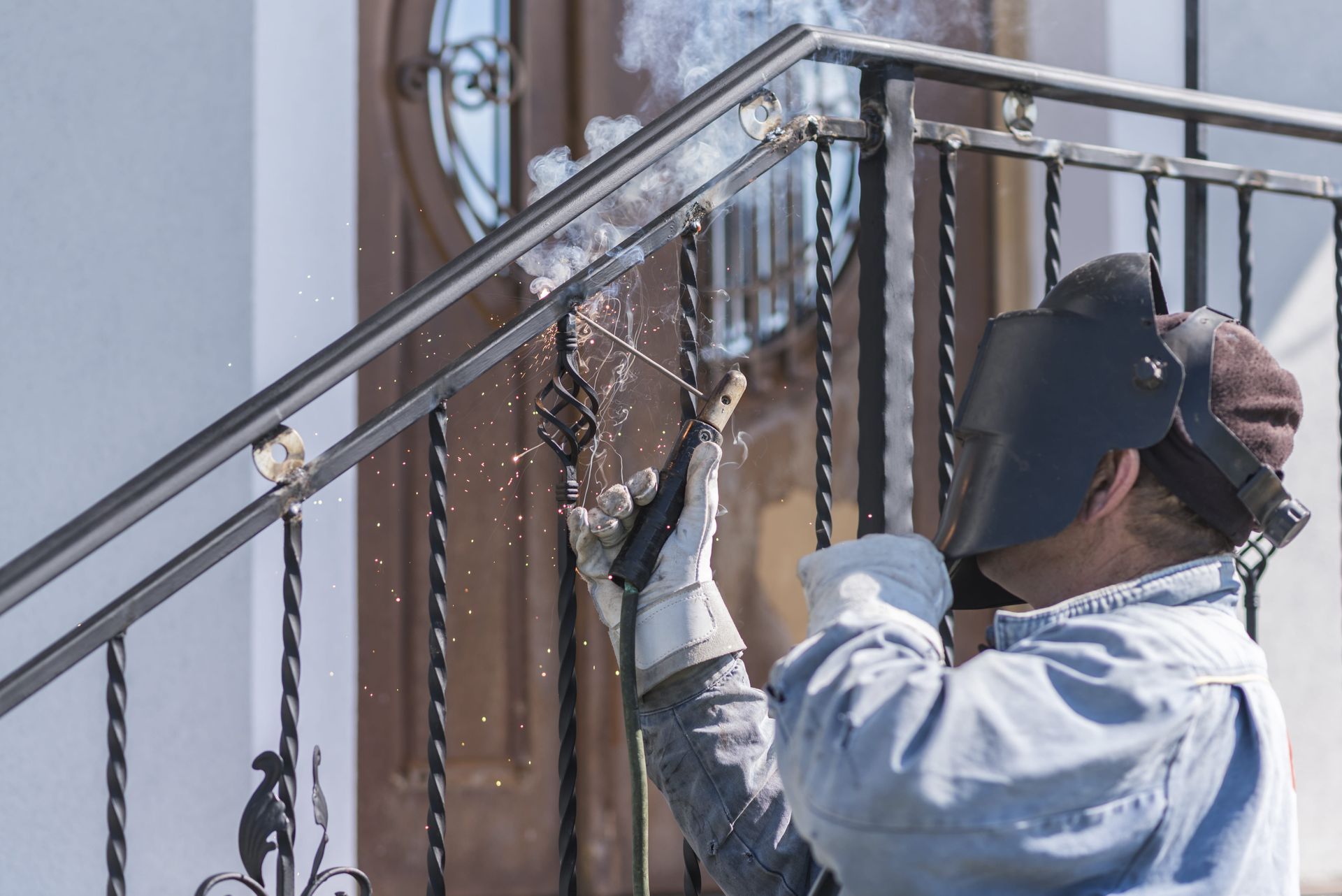
They play a crucial role in both safety and aesthetics. At Atlanta Railing Pros, we understand the importance of having high-quality, custom handrails that not only provide support but also enhance the visual appeal of your home. Whether you're renovating your staircase, adding a deck, or looking to improve accessibility, custom handrails offer numerous benefits that go beyond standard, off-the-shelf options. Safety First: The Essential Function of Handrails Handrails are a key safety feature in any home. They provide necessary support for people of all ages, especially children, the elderly, and those with mobility issues. In staircases, handrails offer a steady grip to prevent falls, which are a common cause of injuries in homes. For outdoor areas like decks and balconies, handrails provide a crucial barrier that prevents accidental falls from elevated spaces. Custom handrails can be tailored to meet specific safety requirements. For instance, they can be designed to be the right height and thickness for a comfortable grip, ensuring that they are both practical and secure. Additionally, custom handrails can include features like non-slip surfaces, rounded edges, and continuous railings to minimize the risk of accidents. At Atlanta Railing Pros, we prioritize safety in our designs, ensuring that every handrail we install meets or exceeds safety standards. Aesthetic Appeal: Handrails as a Design Element Beyond safety, handrails can significantly impact the overall look of your home. Custom handrails offer the flexibility to match your home's architectural style and interior design. Whether you prefer the classic elegance of wrought iron, the modern sleekness of stainless steel, or the warm, natural feel of wood, custom handrails can be crafted to complement your home's existing decor. For interior spaces, handrails can add a touch of sophistication and elegance. A beautifully designed handrail can become a focal point in a room, drawing attention to the staircase or other areas where it's installed. In outdoor spaces, handrails can enhance the aesthetic appeal of decks, balconies, and patios, creating a cohesive look that blends seamlessly with the landscape. Custom handrails also allow for creative expression. You can choose from various designs, finishes, and colors to create a unique look that reflects your personal style. At Atlanta Railing Pros, we work closely with our clients to design handrails that not only meet their functional needs but also enhance the visual appeal of their homes. Material and Design Choices One of the significant advantages of custom handrails is the wide range of materials and designs available. Wood, metal, glass, and cable are just a few of the options you can choose from. Each material has its unique characteristics and can be tailored to suit different design preferences and functional requirements. Wooden handrails offer a timeless and classic look. They can be stained or painted to match your home's interior, and they provide a warm, inviting feel. Metal handrails, such as those made from wrought iron or stainless steel, are durable and versatile, offering a modern or traditional look depending on the design. Glass handrails provide a contemporary, open feel, perfect for showcasing a beautiful staircase or a scenic outdoor view. Cable handrails, with their sleek lines, are ideal for modern and minimalist designs, offering unobstructed views and a clean aesthetic. The Atlanta Railing Pros Difference At Atlanta Railing Pros, we are dedicated to providing our clients with high-quality, custom handrails that enhance the safety and style of their homes. Our team of skilled craftsmen works with you to design and install handrails that meet your specific needs and preferences. We use only the finest materials and employ the latest techniques to ensure that our handrails are not only beautiful but also durable and safe. In conclusion, custom handrails are an essential addition to any home, offering both functional and aesthetic benefits. They provide safety and support, enhance the visual appeal of your home, and allow for creative expression. At Atlanta Railing Pros, we are committed to helping you achieve the perfect balance of safety and style with our custom handrail solutions.
